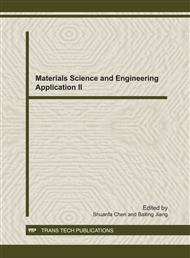p.42
p.46
p.51
p.55
p.60
p.65
p.70
p.74
p.79
The Experimental Study of Natural Sedimentation in Heavy Oil
Abstract:
The desanding in heavy oil has been indispensable to oilfield exploration and production. The methodology of natural sedimentation is considered the effective way in oilfield, as a consequence of the best separation effect, a large handling capacity, low energy consumption, simple operation and low-carbon green. This paper did some research on natural sedimentation separation characteristics in the desanding of heavy oil, through experimental study, in order to test setting time and viscosity of various kinds of size in heavy oil, which indicates the relationship of viscosity, size and sedimentation rate. Not only make sure the relationship of setting time, viscosity and size, but also the boundary between floating zone and stable region in the desanding of heavy oil, Based on these data which has an important guiding role to make sure the time that natural sedimentation takes for oil-water-sand, desanding properties of heavy oil and separator size.
Info:
Periodical:
Pages:
60-64
Citation:
Online since:
December 2011
Authors:
Keywords:
Price:
Сopyright:
© 2012 Trans Tech Publications Ltd. All Rights Reserved
Share:
Citation:


